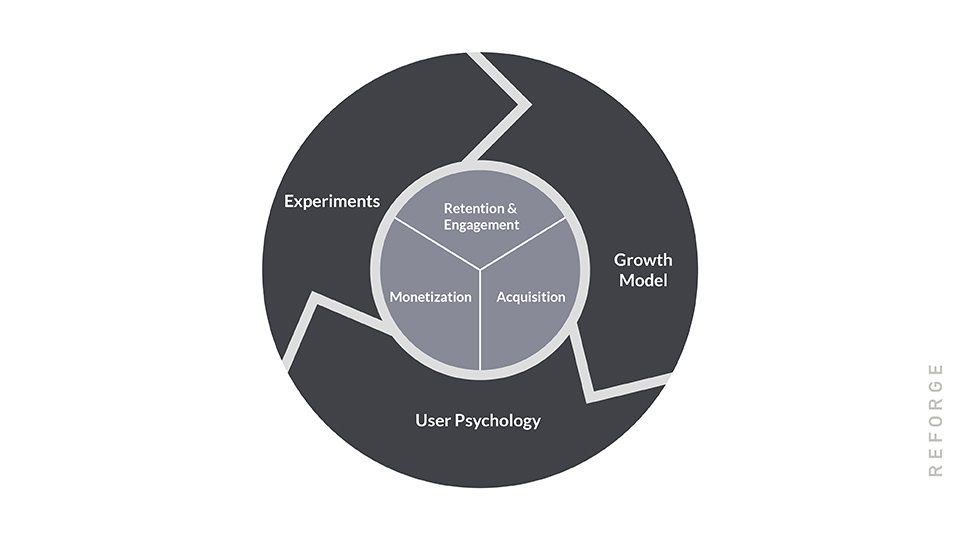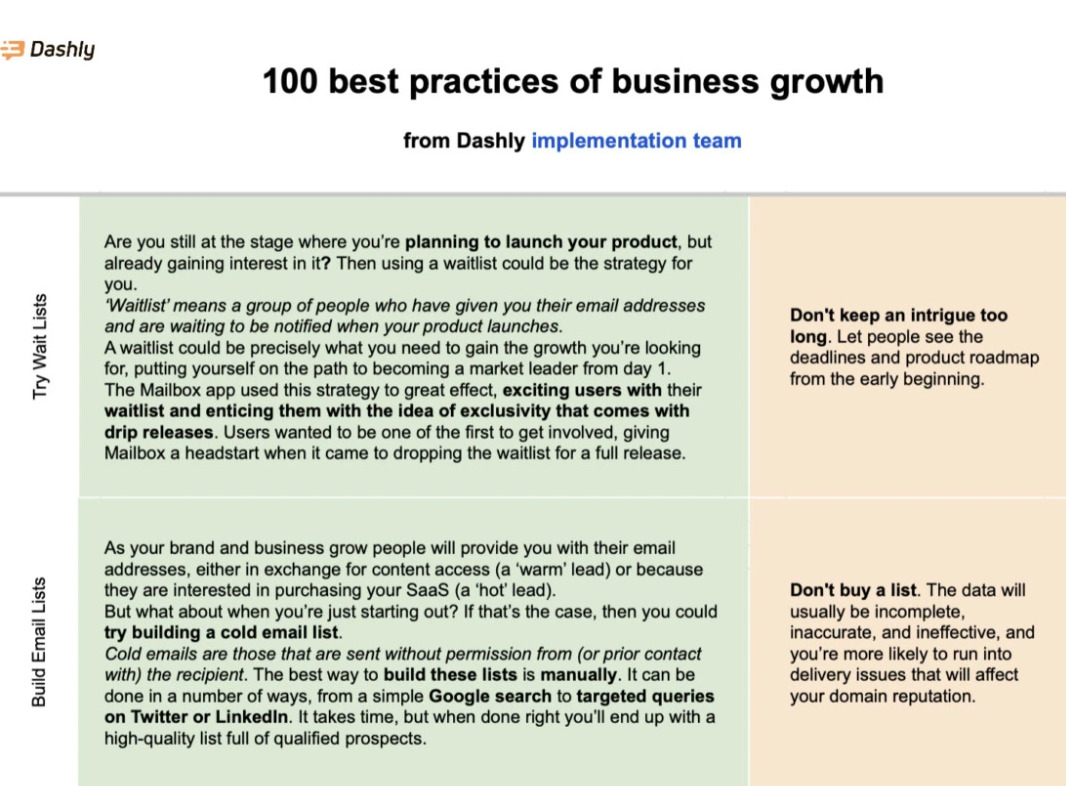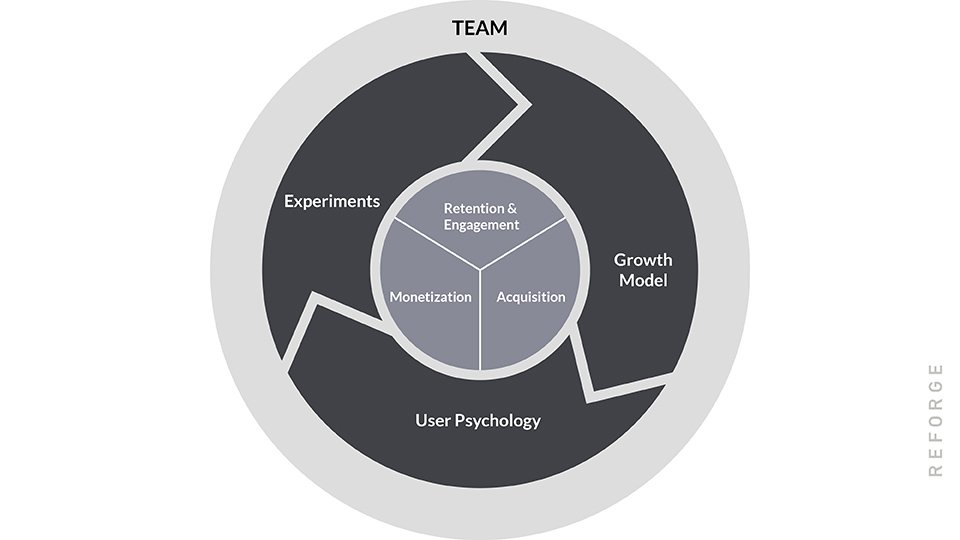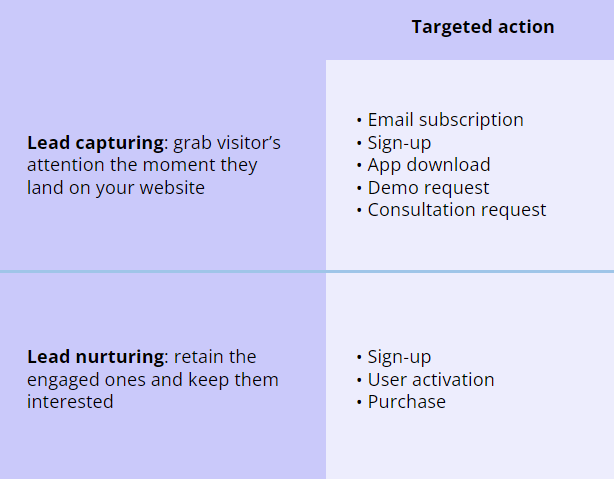Creating the growth team: from product to processes

This blog post is an extract from the article by Brian Balfour, Casey Winters, Kevin Kwok. We took the most important points from the article and added some useful materials based on our own experience of working with growth approach. Everything so you could succeed in building our own growth team!
Let’s go back in time.
It’s 2007 and Facebook has 50 million active users per month, and they expect this number to grow to 300 million by 2012.
Сhamath Palihapitiya is appointed Vice President of Growth at Facebook.
I’m going to change the product, plan to do search marketing and optimization, launch several algorithms, and so on. I call this growth. We’re going to try this and grow. I’ll be in charge of the things that lead to growth.
And so the world’s first growth team was born. Facebook’s growth trajectory changed dramatically. By the end of 2012, instead of 300 million, they had 1 billion active users per month.

Was the growth team 100% responsible for this? Of course not.
But they played an important role. As a result, almost every fast-growing tech company created its own growth team: LinkedIn, Pinterest, Uber, SurveyMonkey, Airbnb, Slack, and others.
Growth has been used for everything, causing confusion and prejudices. We often get asked: what’s the difference between product and growth teams? Growth marketing and marketing? Is growth just about optimization?
What is growth?
This word has been used in so many different contexts that it has ultimately created more confusion and made it harder to understand what to focus on. But set aside opinion on the meaning of growth. What matters is realizing fast-growing companies were inspired by it. Rules of the game have changed.
To understand how they have changed, we need to consider four points:
- Distribution has become more competitive and expensive.
- The life cycle of channels/tactics has accelerated.
- Data availability has increased and costs have decreased.
- The division between product/development/marketing/sales has become less clear.
What’s the solution?
We need to approach the growth strategy from the same perspective (in terms of industry/market, workload, and investment) with which we evaluate our product strategy. This means building a system around the growth task that takes all of these changes into account. It should be:
- rationally organized,
- clearly defined,
- scalable,
- viable.
Such a system will include three large areas at the top level:
- product growth;
- growth processes;
- team growth.
Everything has changed, including these three areas. Let’s take a look at them in detail.
Product growth: forgotten areas of the product
We’ve already mentioned the borders between product/development/marketing/sales got blurred.
Data, technology, and product play a major role in achieving final results such as customer acquisition, retention and new sales. The borders are blurring, but they still exist in most companies.
Areas such as new user experience, user retention, cash flow optimization, technical infrastructure behind customer acquisition, and communication channels (including email, push notifications, and paid channels) directly affect the overall growth of the product.
All of these areas require a deep reconsideration of development and product management practices.
These areas of a product were previously neglected, lacked resources, and were not seen as top priority (hence, “forgotten”). That’s because results of focusing on them are not as visible as new features in the product.
Most product teams are built to create and develop the basic value of the product for users. Growth is about creating a tighter connection between customers and the existing value.
Of course, product growth can be boosted by feature development, but all too often teams start thinking in this way by default and fail to switch.
Building a process around product, retention, engagement, and monetization that leverages the right set of competencies and expertise is the first part of this system.
Read also: Your Growth Marketing Strategy Template with guide and examples
Process of Growth: Hypothesis-Driven Experiments
Every team has processes and frameworks for solving problems. Design thinking, agile, Kanban, and so on. We’ve already mentioned that data availability has grown:
With the emergence of numerous data collection tools, data has become cheaper and more accessible. More and more people in different companies have access to it, especially those who work on growth initiatives. But we’re still at the very tip of the iceberg when it comes to personalization, machine learning, and data insights methods.
Further mastering these methods is the key to solving growth problems.
Stephen Dupree (former VP @ SoFi and LogMeIn) gave the simplest definition of this process. He called it “the scientific method applied to KPIs.”
The basic stages of this process are:
- Build a growth model that helps identify the most effective levers of impact on customer acquisition, retention, engagement, and monetization.
- Understand the user psychology behind these levers.
- Develop a growth model based on hypothesis-driven experiments and understanding of user psychology.
- Connect experience accumulation and learning process to growth model and understanding of user psychology to get better over time.

Stephen Dupree’s definition is perfect because everything depends not only on data but also on intuition/creativity. You need to combine the two to make real breakthroughs.
It is crucial that the process is designed in a way that you can move towards the truth on what really works, not your assumptions.
The truth is vital. The more we know about our product/channels/users, the easier it is to create things that will drive growth.
Although we call it a “growth process”, this approach should not be limited to just one functional area. Aligning growth process and tools with the right problems can benefit all business functional areas: marketing, product, development, design, and sales.
Thanks! Here’s your copy of 100 growth ideas

Team growth: cross-functional teams

So many companies try to create growth teams. The starting point is always the same: “What should the structure of the growth team be? What will be its place in the company?”. That’s not the right approach to solving the problem.
The first step should be to identify the areas/issues that have the greatest impact on growth, and only then to create a team that can effectively solve these issues.
To maximize growth, build a cross-functional team with expertise in product management, development, data, design, marketing and sales. The combination depends on the issue.
Read also: Product Metrics Framework. Unleashing the Power of the AARRR Framework for Business Growth
When we talk about “cross-functional teams”, we don’t mean the teams that just see each other at weekly meetings. These are teams where people:
- stay together;
- are guided by the same metrics/goals;
- work on the same process;
- get satisfaction from the same things.
Growth issues are often seen from a functional view, causing potential solutions to be limited to skills and resources within that area. This fails to bring out the best ideas, since only one function is taken into account.
If you are creating a growth team, here are five practical tips:
Detect one problem.
Usually, it’s an area that the company has neglected before. Don’t try to cover all possible growth areas at once. They are too extensive and will tear your team apart.
Evolution, not revolution.
Respect the culture and principles that made your company successful before. Develop these principles, don’t rewrite them completely.
Expect failure.
Strive for quick wins but be prepared for constant failures, especially at the beginning. Give the team time to work and learn.
Discuss successes.
Use successful experiments as an incentive to show how you solve problems. Successful experiments will lead to others, giving you more opportunities.
Don’t call it a growth team.
Some people may feel that they don’t need to worry about growth once the growth team appears. Others may feel that their contribution is not valued enough because growth is the merit of the whole team. Stereotypes associated with the term may also play a role.
What to do? Name the team based on the problem it solves/its mission, i.e. “New Customer User Experience Team”, “Lifecycle Team” and so on.
Thanks! Here’s your copy of the growth strategy template

The bottom line
The future is unclear. Some of us dream of getting rid of the term “growth” forever because it creates more confusion than it solves problems.
It’s too early to get rid of the term, but let’s see what’s happening right now:
- Product growth is becoming a part of a good product.
- Understanding/using growth processes means being a good product marketer/developer, and so on.
- Cross-functional teams are the norm, they are better than departments.
Developing a rational, clearly defined, reproducible, and viable growth system is just one step towards mastering the new rules of the game.
Free expert insights to boost your marketing strategy and raise conversion to a target action by 10%

Read also:
- Growth marketing framework: Battle-tested insights from Dashly experts
- Growth Product Manager: Charting new frontiers in product scaling
- 20 product led growth examples to inspire your team [expert edition]








